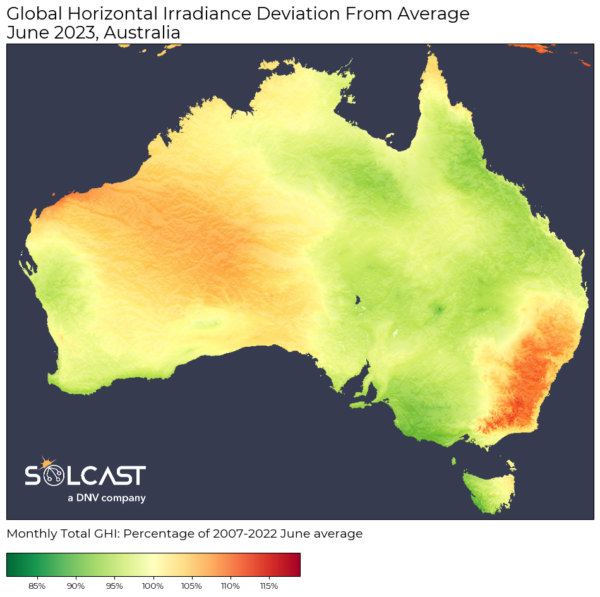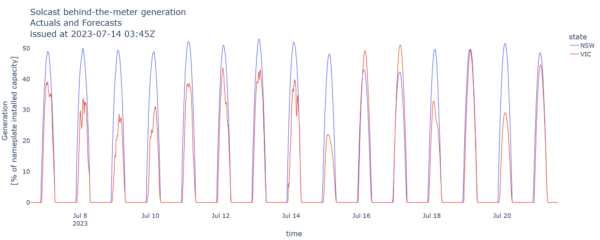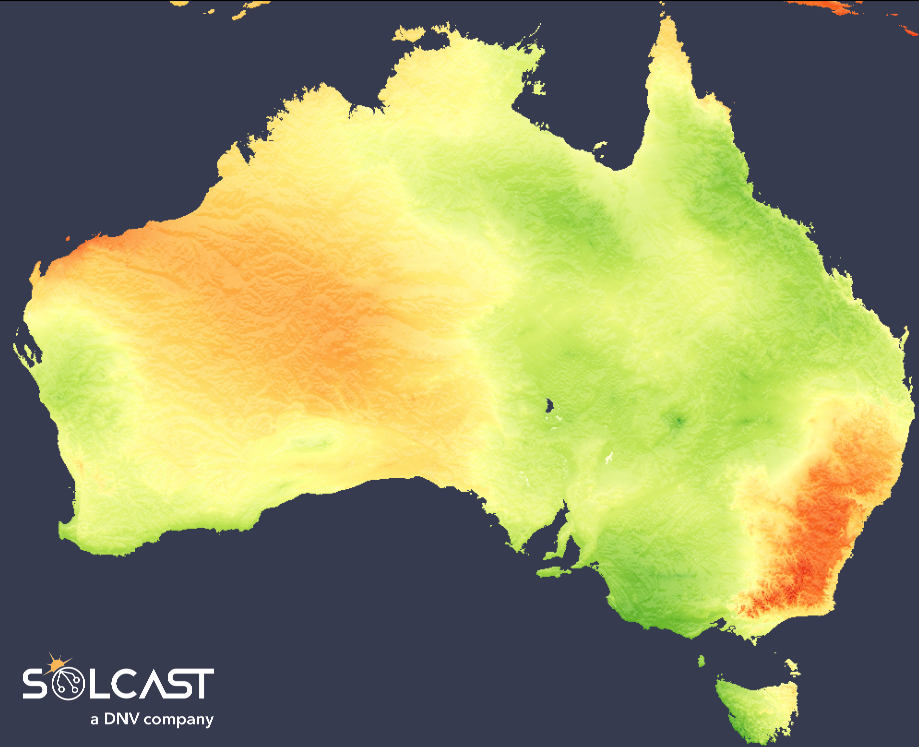Eastern New South Wales received irradiance about 15% above normal for June, whilst central and western Victoria received totals 10-20% lower than normal according to data collected by Solcast, a DNV company, via the Solcast API.

These variations were driven by unusually persistent low pressure in the Great Australian Bight. This system set up persistent westerly winds that dragged cold and moist air from the Southern Ocean into south-east Australia. However, the Great Dividing Range along the east coast of the continent forms a natural barrier, which dries out these westerlies, giving rise to broadly sunny conditions across eastern New South Wales – great for solar production.
Australia has very high rooftop solar penetration, with over 17 GW of installed capacity across more than a quarter of households according to energy.gov.au. These installations are concentrated in the state capital cities, and so weather conditions in Melbourne and Sydney have an outsized impact on behind-the-meter generation.
Behind-the-meter rooftop solar totals from the Solcast API show that this weather pattern is continuing into July. In Victoria, inconsistent and cloud-affected conditions are causing peak daily solar generation to drop to as low as 25% of nameplate capacity. In contrast, New South Wales is experiencing steadier solar performance, with peak daily generation consistently between 40-50% of nameplate capacity
Popular content

Solcast produces these figures by tracking clouds and aerosols at 1-2km resolution globally, using satellite data and proprietary AI/ML algorithms. This data is used to drive irradiance models, enabling Solcast to calculate irradiance at high resolution, with typical bias of less than 2%, and also cloud-tracking forecasts. This data is used by more than 300 companies managing over 150GW of solar assets globally.
The views and opinions expressed in this article are the author’s own, and do not necessarily reflect those held by pv magazine.
This content is protected by copyright and may not be reused. If you want to cooperate with us and would like to reuse some of our content, please contact: editors@pv-magazine.com.


What about WA?